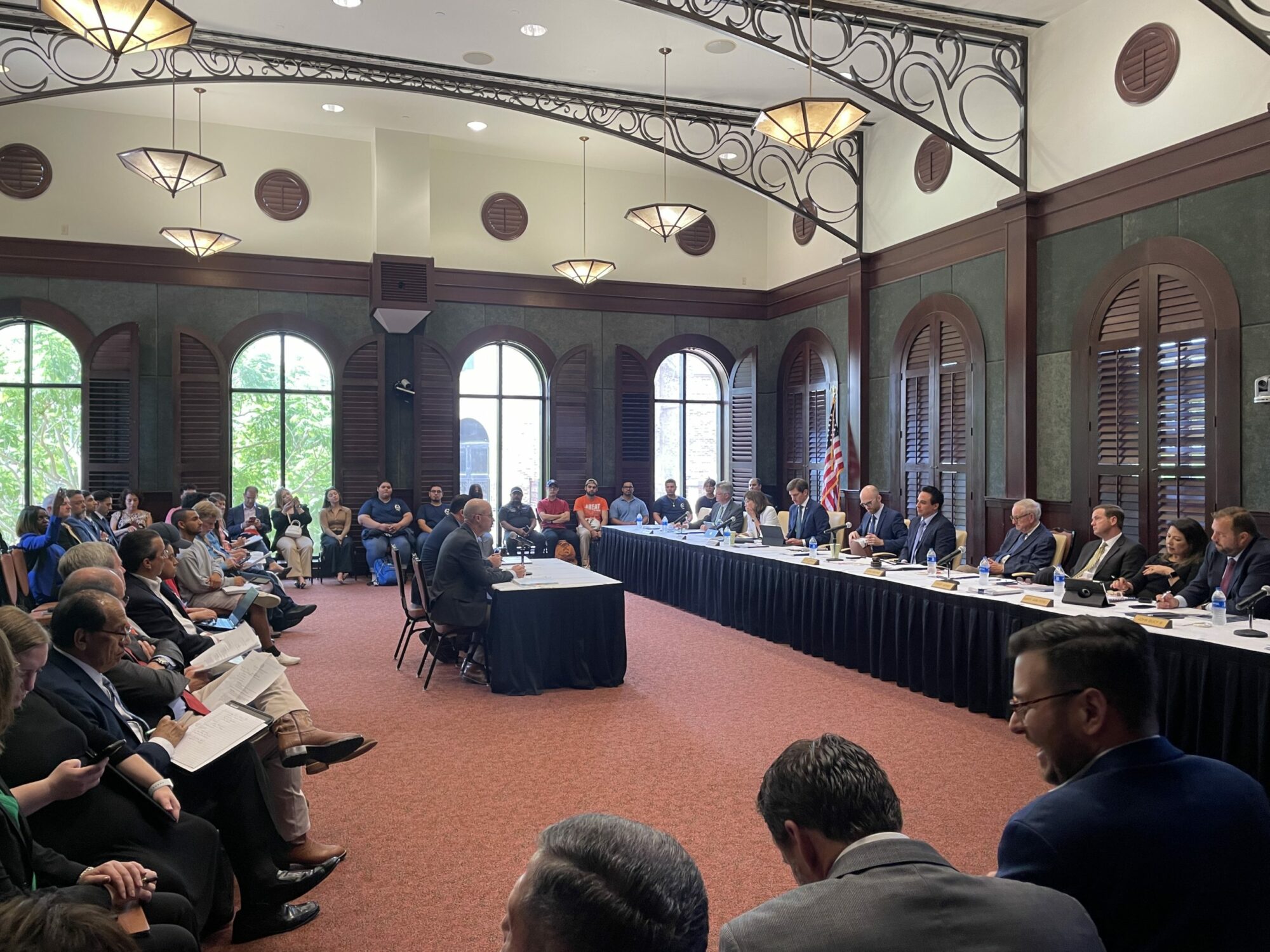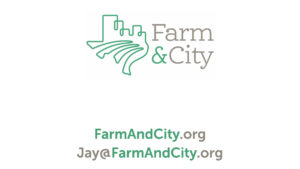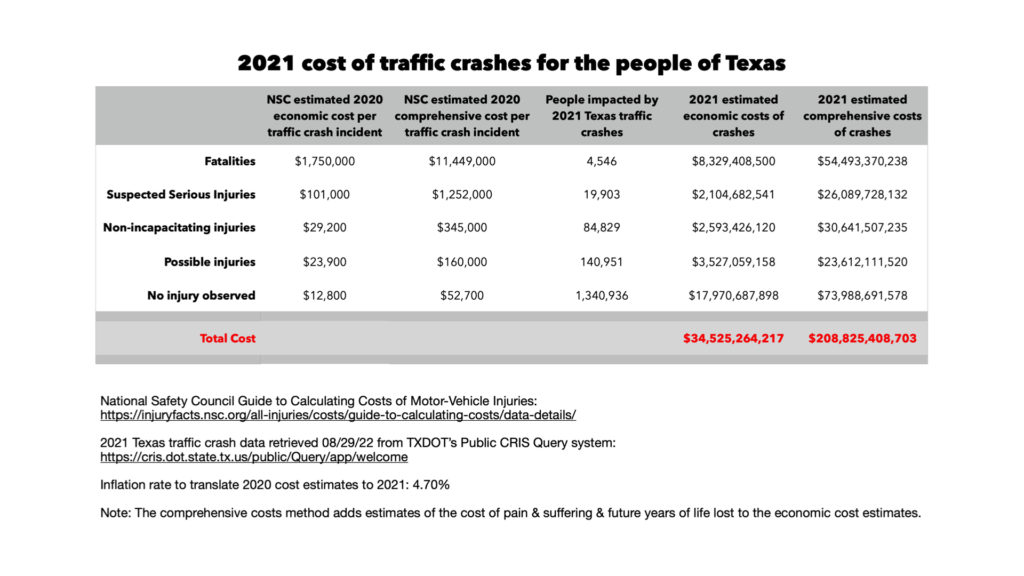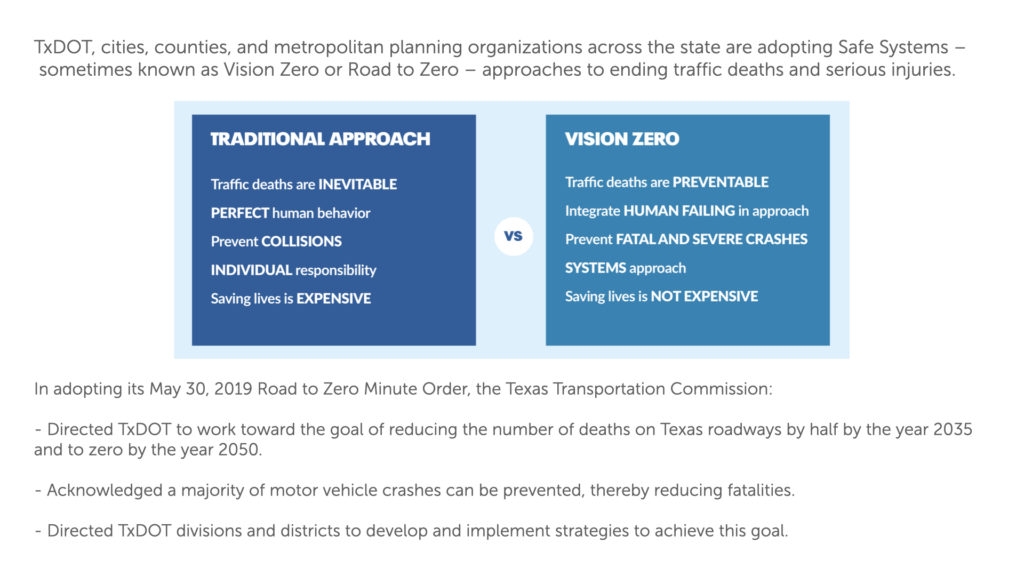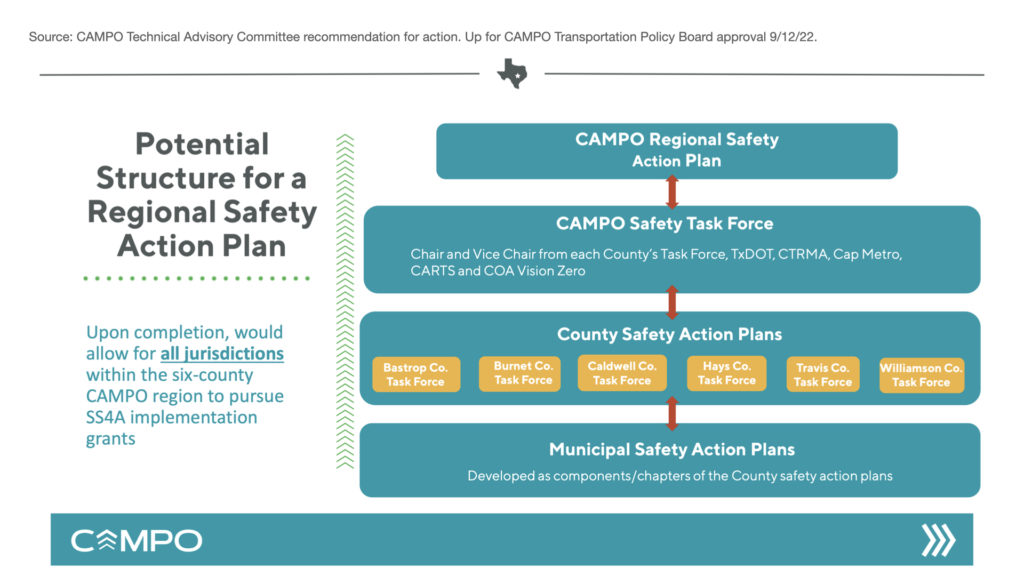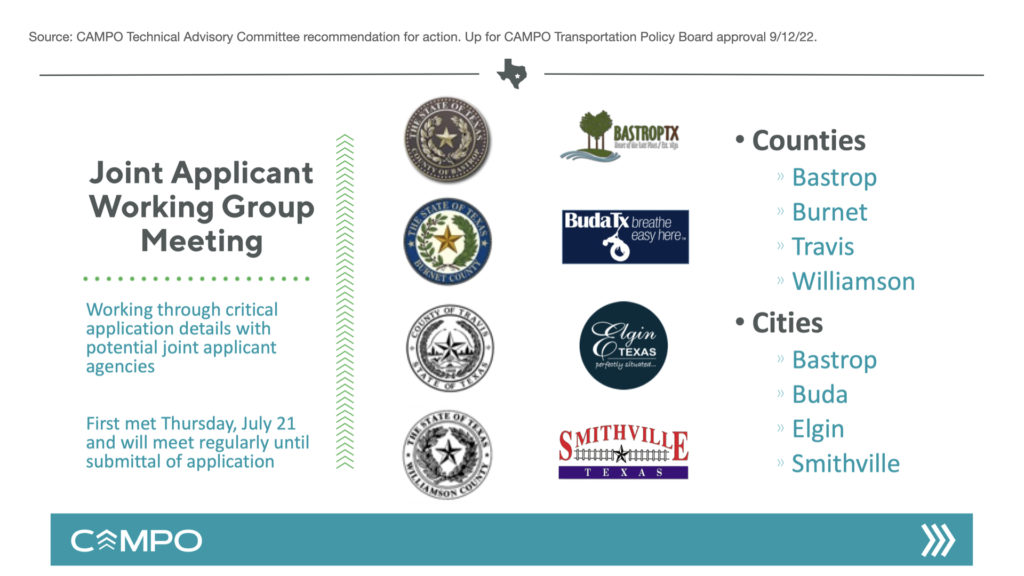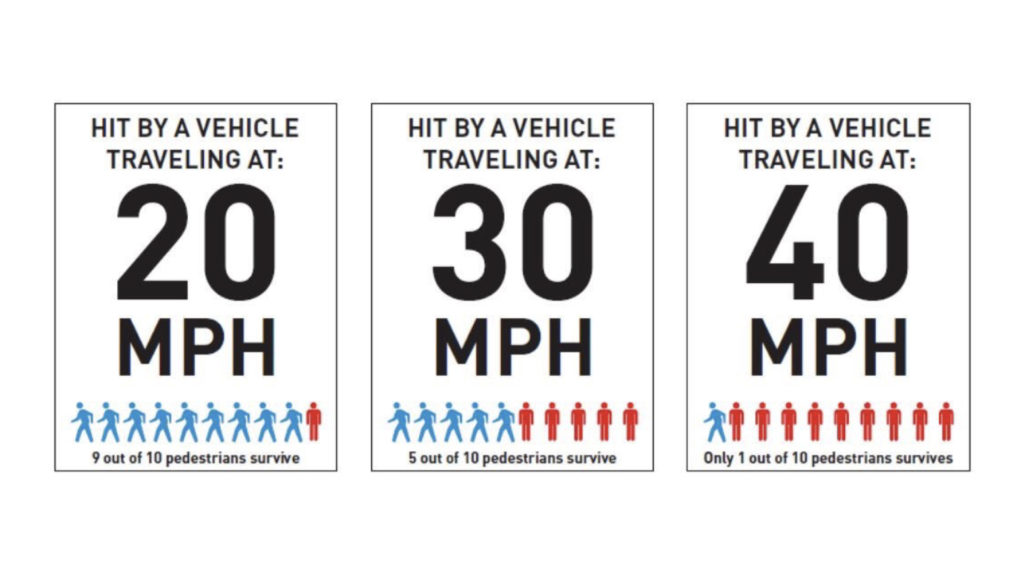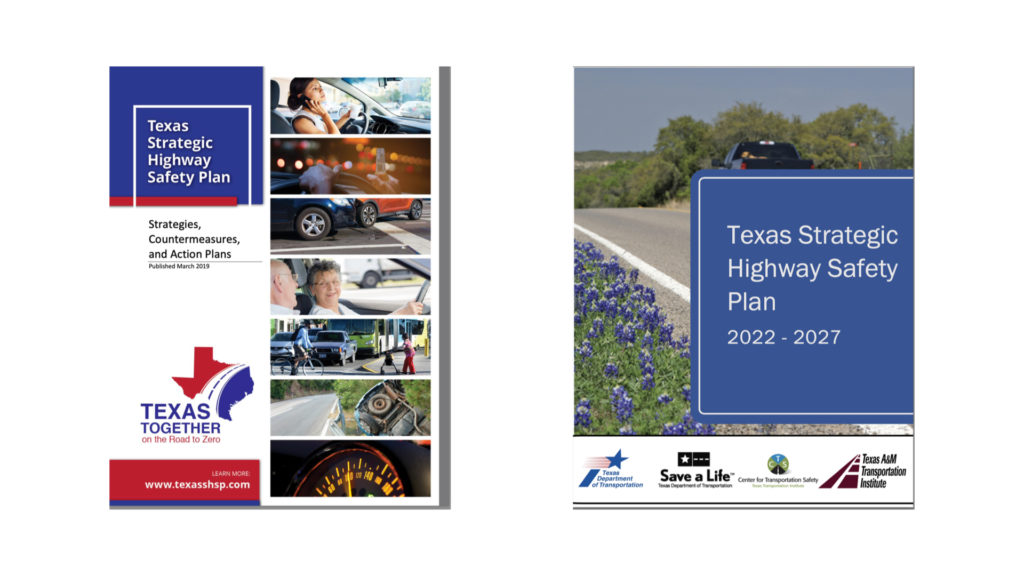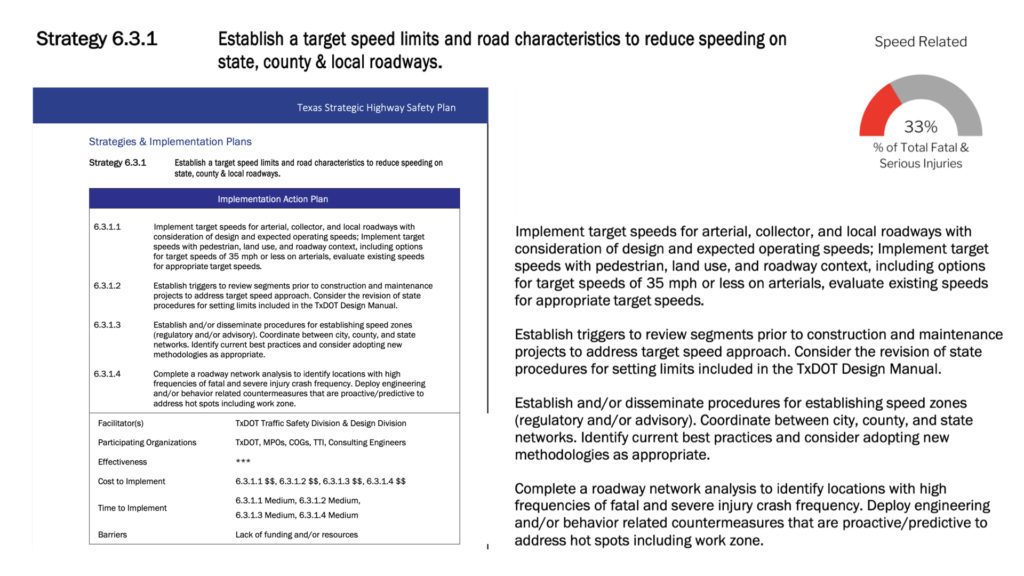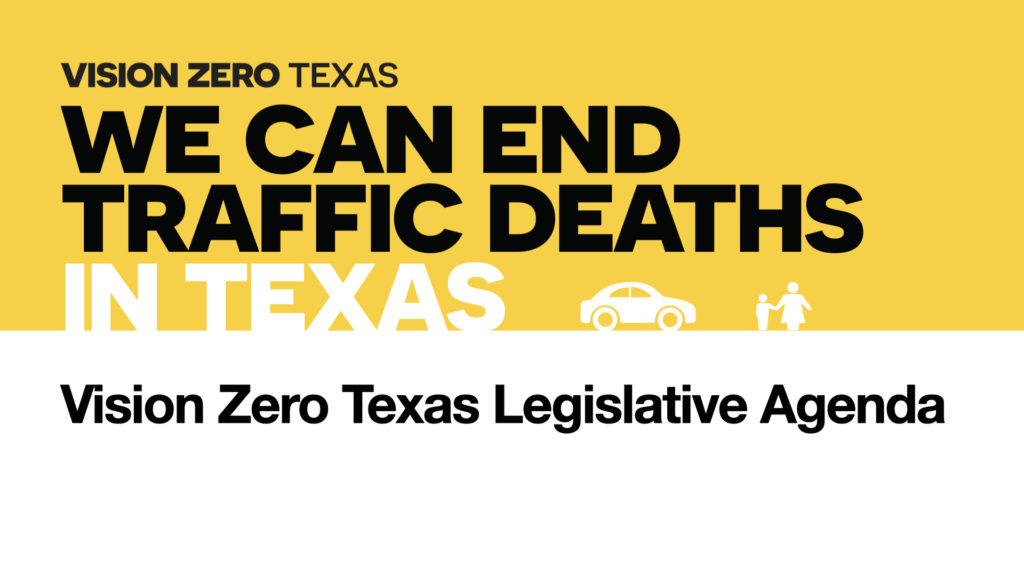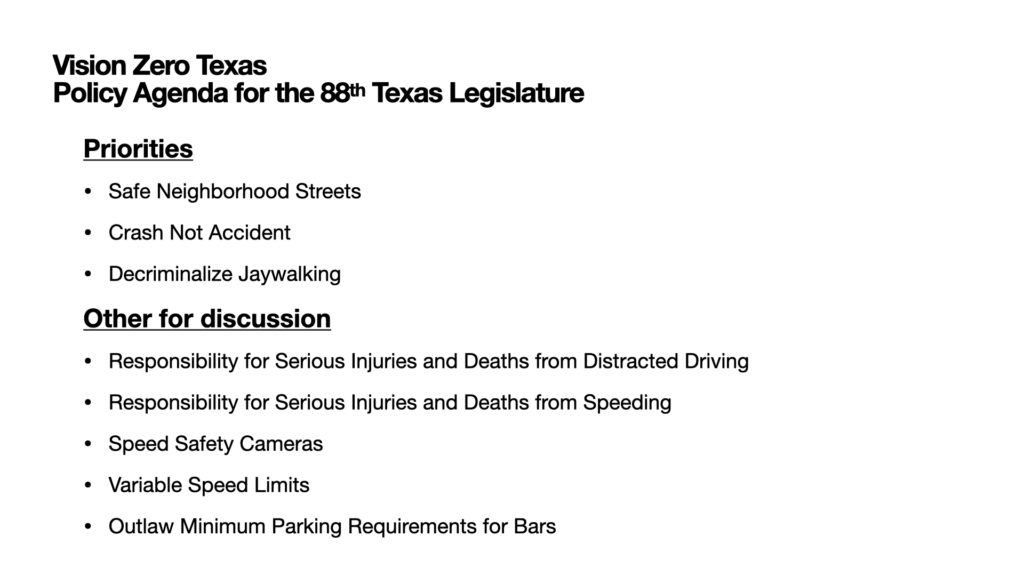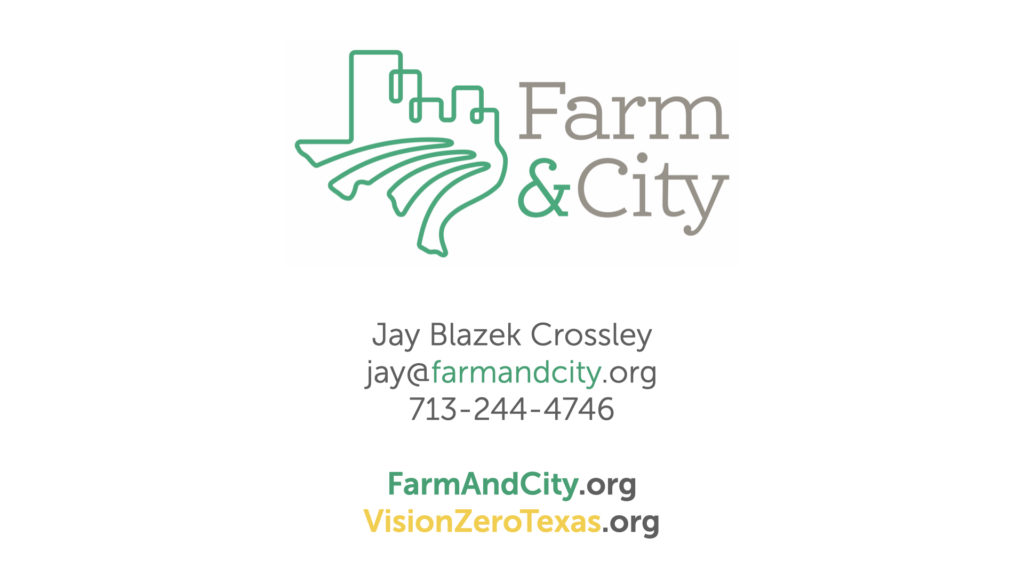Jay Blazek Crossley
Executive Director
Farm&City
Prepared Comments: Invited Testimony
Texas House Committee on Transportation, September 8, 2022 Hearing
UT Rio Grande Valley Brownsville Campus
Brownsville, Texas
Hello Chair Canales and members. Thank you for your service to the people of Texas and for this discussion on the rolling crisis of traffic deaths and serious injuries.
My name is Jay Blazek Crossley, Executive Director of Farm&City, a 501c3 nonprofit think and do tank that focuses on Texas transportation and urban planning policy.
The TxDOT CRIS database reports that 1.5 million people were involved in traffic crashes in Texas last year – people in fender benders, people who got hurt a little, and people who were seriously injured or killed.
Using National Safety Council methodology, I estimated the economic cost of these crashes were 34.5 billion dollars, just for last year’s crashes.
When I use the NSC comprehensive costs methodology – which also adds in pain and suffering and future years of life lost, the total burden that people carry for Texas crashes last year is 208 billion dollars.
These costs of crashes add up to families’ lives changed forever and economic loss to Texas.
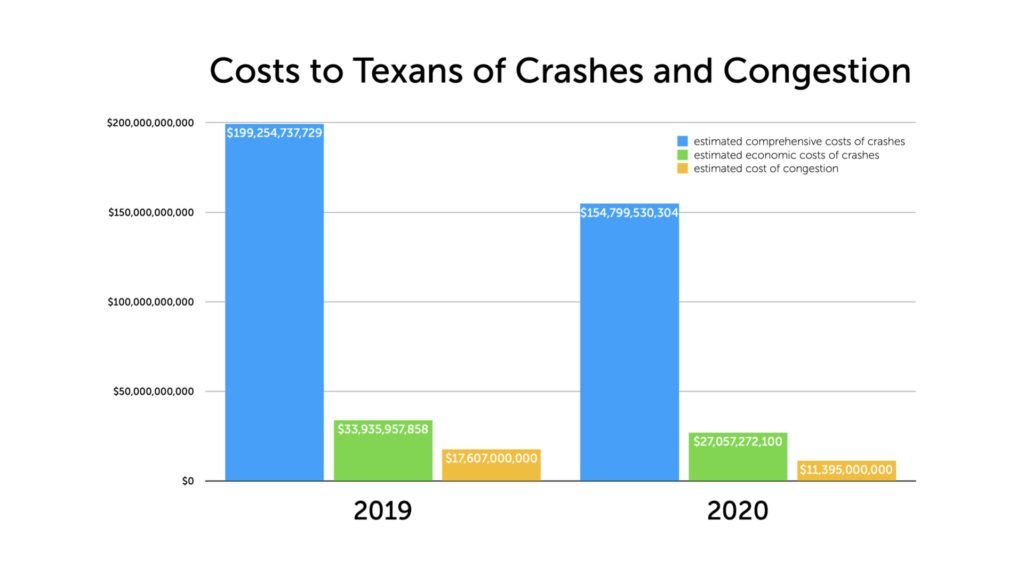
Often we hear about the Texas A&M Transportation Institute’s annual Urban Mobility Report, which estimates the costs of congestion. In recent years, the total estimated cost of congestion for Texans has been about sixteen to eighteen billion dollars, certainly a sizable issue, but one that pales in comparison to the costs of crashes – even if we just consider it in terms of the economic costs.
Part of fixing both of these problems is getting a handle on our traffic safety crisis, which will require deploying new tools and significantly ramping up those that we know are working to systematically fix these problems that include individual behavior, but also a variety of public decisions.
Vision Zero and Road to Zero are approaches to eliminating deaths and serious injuries in our transportation systems, to make it safe to walk, bike, use a personal mobility device, use transit, or drive and ride in cars and trucks.
My organization has been blessed to work effectively with about 14 Texas governments to adopt and improve these approaches to eliminating traffic deaths on our streets and roads. But we’ve got 255 counties, over 950 towns and cities, and 23 metropolitan planning organizations, and every single one of them needs to commit to working with TxDOT to end traffic deaths.
Thankfully, the understanding of our traffic death problem and the need for action has been changing dramatically in public opinion across our state and at every level of government.
Along with TxDOT’s adoption of Road to Zero, the eight largest cities in Texas have begun or adopted Vision Zero Action Plans, as well as the largest county and some smaller cities.
Many local and regional Texas governments are finalizing applications right now for the Federal Safe Streets 4 All grant program that will fund safety improvements and provide planning funds for city, county, and metropolitan safety plans.
The plan developed by the Capital Area Metropolitan Planning Organization to coordinate safety planning, data, and analysis across the metropolitan region is a truly great approach that will transform the ability of governments in Central Texas – and TxDOT Austin – to more efficiently use public funds to get results that mean lives and limbs saved on our streets, and all of us suffering less from the high costs of crashes.
This plan brings together urban, sub-urban, and rural, and cities and counties led by Republican and Democrat elected officials – united in a desire to end traffic deaths in the region, and to ensure the region gets its fair share of Safe Streets 4 All funding.
Once governments have a better ability to analyze traffic, one of the primary conclusions is that there are fewer problems bigger than speed. More people died last year in Texas from crashes involving speeding than any other crash factor.
If I’m driving my car at 20 miles per hour and I hit a pedestrian, they have a 90% chance of survival. However, if I’m just going 40 miles per hour and hit a pedestrian, nine out of ten times, they will die.
These same dynamics occur for people involved in crashes inside of cars, even with their seatbelts on. Every ten miles per hour faster we are traveling when we get in a crash yields exponentially greater risk of severe injury or death.
There is broad agreement among the traffic safety community that this can significantly explain why traffic deaths went up in 2020 and 2021, in spite of reduced vehicle miles traveled. Without congestion, people were able to use Texas streets and freeways how they were designed – at dangerous speeds, yielding higher rates of crash severity.
A key principle of Vision Zero is focusing on reducing risk of death and serious injury, instead of simply reducing crashes, and this slide illustrates why this is important.
Many Texans believe freeways are safer than local streets. Often when communities are considering how to fix a corridor, reducing cut-through traffic on small streets is presented as a major goal, often with safety language attached.
These arguments are based on the chart on the left. When we simply look at the rate of crashes, TxDOT facilities appear safer than local streets. However, if we instead focus on severe crashes, we find that TxDOT facilities are more dangerous than local streets.
This most likely can be explained by speed. In rural, sub-urban, and urban Texas, the facilities designed for the highest speeds are our state on-system roadways, where there are terrible results of someone driving seventy miles an hour – every day.
Thankfully, TxDOT, local governments, the Texas Department of Public Safety, academics, nonprofits, and other community leaders and public servants have been working to change our transportation system so that Texans don’t have to suffer so much.
I had the opportunity to be on stakeholder committees for the 2017 Texas Strategic Highway Safety Plan (SHSP).
The Texas SHSP must be built upon proven data-backed countermeasures, based on guidance from TTI, CTR, and other researchers as well as the Federal Highway Administration’s excellent lists of proven countermeasures.
The new 2022 Texas SHSP was completed this Spring and I’ve provided copies to the committee clerk . If there is one thing you remember from my talk today, I hope it is to make sure that a copy of this document is in your office, and that someone really reads through this plan.
There is no better source for tools that can work for Texas to fix our traffic safety crisis.
The Texas SHSP includes a broad approach to our speed problem, beginning with modern standards on design, speed limit setting, and learning to build new facilities and retrofit existing facilities where it feels normal to operate a motor vehicle at a speed that is safe for the situation you are in and the people you are interacting with.
There are some things in the SHSP that are technical fixes – where the legislature could certainly support and give clear guidance to giving the highest priority to safety, but there also are many ideas that simply could come down to funding. Texans are ready to implement proven safety measures like Safe Routes to School or police training – with clear support and funding for executing this plan.
Farm&City leads Vision Zero Texas – the advocacy movement working with communities, nonprofits, and governments to end traffic deaths and serious injuries.
We work closely with the volunteer members of Central Texas Families for Safe Streets to advocate for policies that will end the suffering these families have endured.
We hope your committee will consider the following suite of reforms. We believe this is a reasonable set of tools that would enjoy broad public support.
Safe Neighborhood Streets, allowing city traffic engineers to design two-lane undivided residential streets to the speed they believe is safe for children, the elderly and everyone in between, including 20 mile per hour neighborhood streets designed for people walking, using wheelchairs, riding bicycles, and driving in cars and trucks, together, safely.
We should fix the Texas transportation code to replace the misleading word “accident” with the more accurate word “crash.” Using the word accident gives the mistaken impression that human decisions couldn’t have been made differently to avoid that crash. Families who have lost a loved one in a crash do not like using the word “accident,” and neither does TxDOT, the Federal government or our justice system.
We want to remove barriers to choosing the safest mode of travel – walking. Ancient laws are still on the books demanding that we walk on a certain side of streets with no sidewalks, but we are not aware of any study showing these laws save lives.
People should take responsibility for the most serious outcomes of their decisions to drive distracted or at dangerous speeds. Like the laws on the books today for drunk driving, if I were to cause someone’s death because of my decision to look at my cell phone or drive above the speed limit, I think the State of Texas should hold me responsible for that action, in a way that we do not do today.
We need a comprehensive approach to speed. Speed safety cameras are a proven effective tool, which we could deploy in school zones to protect our children and teachers. TxDOT and local governments should be empowered with modern technology, such as variable speed limits, to allow for travel at higher speeds when it is safe, and lower speed limits when it is not, such as during roadway construction, weather, or congestion.
Finally, we believe that the State of Texas should outlaw the outrageous practice of cities requiring that bars provide ample parking for their patrons to drive home drunk.
We appreciate your consideration of these reforms and thank you so much for your time today. I’d love to answer any questions.

